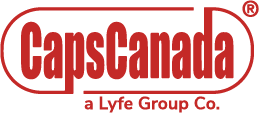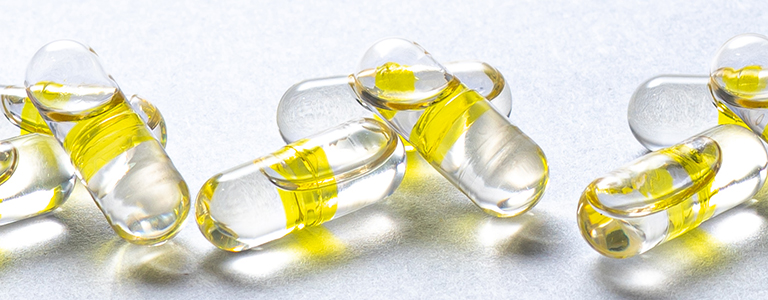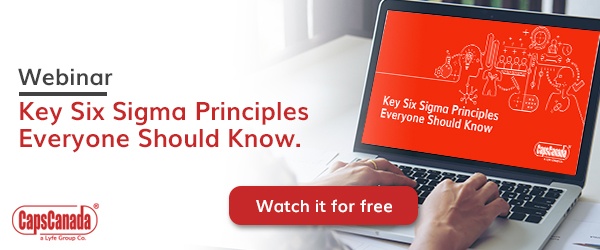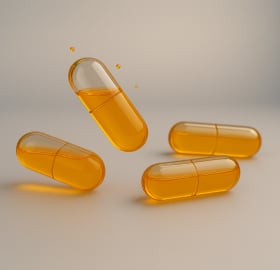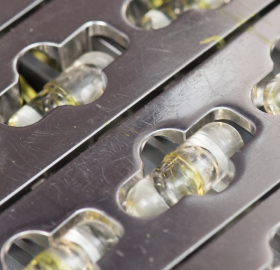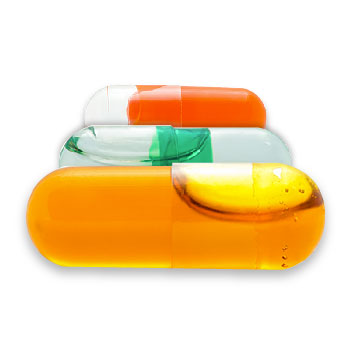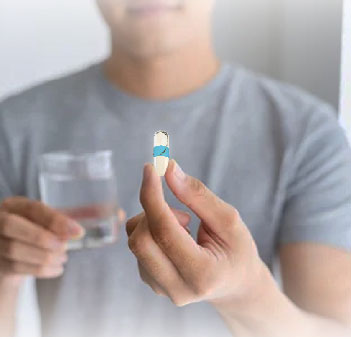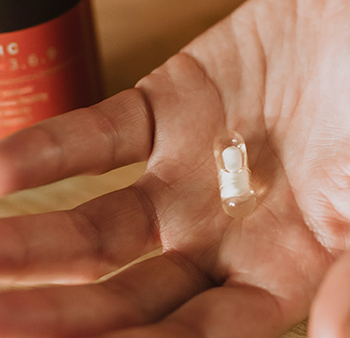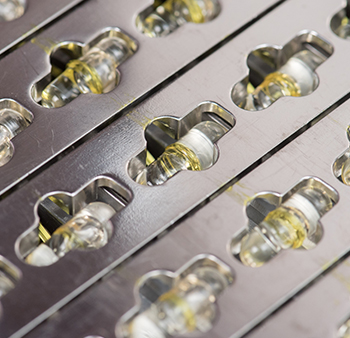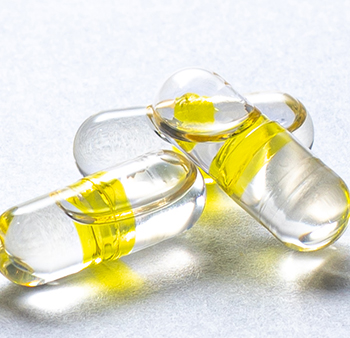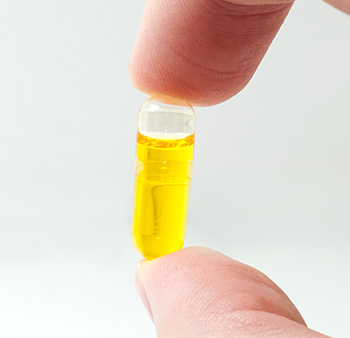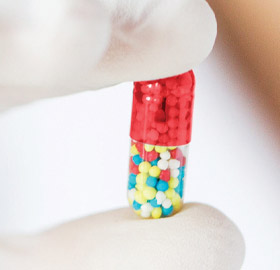Even as biologics and gene therapies make headlines, solid dosage forms—tablets and capsules—remain the bread and butter of drug delivery. In 2019, more than half of CDER’s approved novel drugs took solid dosage form, as do a large majority of OTC and prescribed medicines.
The reasons for this are simple: Solid dosage forms are well understood, cost-effective and preferred by patients and consumers alike. Liquid-filled hard capsules (LFHCs) are especially appealing.
Why Liquid-filled hard capsules (LFHCs)?
LFHCs have been around for decades, but today’s difficult APIs and increased competition have rekindled interest in this versatile and value-adding dosage form.
1. Better content uniformity:
Low-dose APIs are good candidates for LFHCs because liquid combinations are more uniform than powder combinations. LFHCs exhibit outstanding content uniformity compared to tablets.
2. Faster product and process development:
LFHCs require fewer excipients than other dosage forms, potentially accelerating product development. The encapsulation process entails three basic steps: Fill the body of the capsule with liquid using high-precision volumetric pumps, place the cap over the body, and apply a liquid seal where the body and cap meet. This process is less complex and less capital-intensive than manufacturing softgels. Feasibility batches and scaleup are also easier because the filling equipment comes in all scales, from benchtop to production, and scaleup is typically linear. In most cases, the same capsules used in clinical trials can be used for the marketed product. Other dosage forms require additional work to transition to commercial scale.
3. Favorable alternative to softgels:
LFHCs offer several advantages over softgels. To start, it’s easier to develop products and processes with LFHCs because the filling machinery and capsules are similar to what’s used to produce powder-filled capsules. This flattens the learning curve for formulators and operators. The capital cost of the equipment is also lower, and hard capsule fillers can handle smaller volumes more economically. Furthermore, softgels contain as much as 30 percent plasticizer, while hard capsules don’t have plasticizers aside from water. This can impact excipient selection and drug product stability. For example, hydrophilic carriers such as polyethylene glycol can be problematic in softgels. Overall, LFHCs are more resistant to the migration of water and oxygen.
4. Choice of shell materials:
The principal ingredient in most empty hard capsules is either gelatin or hydroxypropyl methylcellulose (HMPC), also known as hypromellose. There are advantages to both materials depending on the application. Gelatin, derived from animal bone and hide, is the traditional material and widely used, but HPMC, derived from plants, is a better choice for moisture-sensitive and hygroscopic fills and when there is a risk of capsule embrittlement. HPMC also provides more thermostability—but less oxygen protection—than gelatin, but the latter can be overcome by adding an antioxidant and/or using oxygen-barrier packaging. Both gelatin and HPMC can be certified halal and kosher and, because of its non-animal origins, HPMC is the ideal alternative for people with religious or dietary requirements or preferences.
5. Adjustable shell chemistry:
If warranted, the chemistry of both gelatin and HPMC capsule shells can be tailored to the formulation they deliver, such as accommodating hygroscopic, hydrophilic and lipophilic fill materials. Flavored capsules and/or banding are available to overcome unpleasant odors.
6. Production-scale flexibility:
Because LFHCs are easier to make in small batches, pharmaceutical manufacturers are better able to justify the pursuit of niche therapies and to serve dietary supplement markets smaller than typically preferred. Small production runs also make A/B testing more viable. By starting with a limited run, you can see whether the product meets sales expectations before making a larger commitment.
Keep learning...
7. Combination forms:
LFHCs can combine with other solid dosage forms and/or combine APIs. Combodart, for example combines dutasteride and tamsulosin. Such fixed-dose combinations have novel release profiles for a superior therapeutic effect. With more competition and more generic substitutes on the horizon, incremental improvements become valuable advantages.
8. Abuse-deterrence:
LFHC formulations can make it more difficult to insufflate, inject, or otherwise defeat the extended-release properties of opioids and other potent drugs. Typically, the fills are thermo-softened, encapsulated in liquid form and then allowed to cool and solidify. Hard capsules accommodate a range of sticky, waxy and paste-like materials.
9. Extensive branding and ID options:
Hard capsules come in a limitless range of color combinations between capsule body, cap, and band seal [10]. In addition, hard capsules can include pre-printed logos or other imprints that enhance branding and identification.
10. Easier formulation of difficult APIs:
Liquid-filled capsules make difficult actives—those with low water solubility and/or poor permeability—more bioavailable. A high percentage of new molecular entities (NMEs) and active pharmaceutical ingredients (APIs) are of this type (BCS Class IV), meaning they cannot be readily absorbed into the body when delivered as conventional solids. While formulators can micronize and/or nano-size the API to improve absorption, superfine particles are difficult to deliver in solid form. Once dispersed into a liquid carrier, however, they are easily filled into capsules. One popular approach is to create lipid-based formulations, such as self-emulsifying (or self-micro-emulsifying) drug delivery systems (SEDDS/SMEDDS).
11. Safer handling of HPAPIs:
LFHCs are also helpful in delivering high-potency APIs (HPAPIs), such as cytotoxins. In a liquid carrier, HPAPIs are much less likely to migrate, reducing the risk of worker exposure and the need for expensive containment. In fact, most substances are easier to handle and behave more predictably in a liquid carrier regardless of potency, making LFHC delivery a preferred method.
12. Expertise at the ready:
The deep knowledge of hard capsule suppliers like CapsCanada has always been important to developing and manufacturing LFHCs. Now, to help more manufacturers realize the benefits of LFHCs, CapsCanada has expanded and offers its three decades of experience to develop and manufacture your LFHC products. Let us demonstrate the technology and facilities that can accelerate and enhance your project to fill liquids, suspensions, or semi-solids into our industry-leading gelatin and HPMC capsules.

